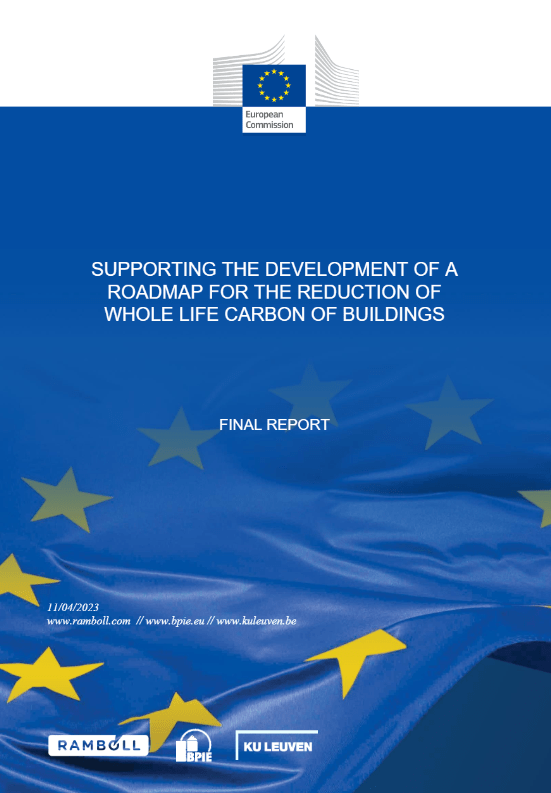
Resumen:Este informe proporciona la línea de base de las emisiones de carbono a lo largo de toda la vida (WLC) y las proyecciones de los edificios de la UE según tres escenarios diferentes. Se trata del informe final del estudio Supporting the development of a roadmap for the reduction of WLC in buildings, encargado por la Dirección General de Medio Ambiente de la Comisión Europea. Estos resultados resumen el trabajo del equipo del estudio en la ampliación de las emisiones a nivel de edificio a todo el parque de edificios de la UE a través de la modelización de arquetipos de edificios y actividades a nivel de parque como la nueva construcción, la renovación de la eficiencia energética y la demolición. Para ello, se evalúa el potencial de una lista de soluciones que pueden ayudar a reducir la huella de carbono operativa e incorporada de los edificios, desde medidas de suficiencia que eviten las nuevas construcciones hasta mejoras en la producción de materiales y la eficiencia en el uso de los mismos, así como el aumento de la cuota de mercado de materiales de construcción alternativos.
Summary:This report provides the whole-life carbon (WLC) emission baseline and projections of EU buildings according to three different scenarios. It is the final report of the study Supporting the development of a roadmap for the reduction of WLC in buildings, commissioned by DG Environment of the European Commission. These results summarise the work of the study team in scaling up building-level emissions to the entire EU building stock through the modelling of building archetypes and stock-level activities such as new construction, energy efficiency renovation and demolition. This is done by assessing the potential of a list of solutions that can help reducing the operational and embodied carbon footprint of buildings, ranging from sufficiency measures avoiding new constructions to improvements in material production and efficiency in material use, as well as increasing the market share of alternative building materials. The findings presented in this report are based on an approach that brings together three key workstreams to gain a better understanding of the building stock’s WLC emissions and to outline future pathways for decarbonisation: 1. representative building archetypes are used to reflect the lifecycle impacts of new and existing buildings across the EU; 2. embodied carbon reduction solutions quantify the decarbonisation potential and implementation curve for measures to avoid new construction, improve building design, and shift to low-carbon materials. These solutions have been primarily assessed and applied to new constructions, though a limited set of these reduction options have also been included in modelling low carbon renovations. The low carbon solutions are modelled to their respective maximum capacity by 2040; 3. building stock modelling integrates the above two analyses as well as wider macroeconomic, demographic and decarbonisation trends to quantify the emissions and pathway scenarios between 2020 and 2050.
Fecha publicación: 2023
Autor: BPIE , Dirección General de Medio Ambiente (Comisión Europea) , KU Leuven , Ramboll ; Le Den, Xavier ; Steinmann, Jacob ; Kockat, Judit ; Toth Zsolt ; Röck, Martin ; Allacker, Karen ; Kovacs, Attila
ISBN / ISSN: 978-92-68-09919-3 /-
Link: https://n9.cl/4gezj
Palabras clave: edificio , informe , material de construcción , mejora de vivienda , método de investigación , norma técnica , política energética de la Unión , prospectiva , reducción de las emisiones de gas , rendimiento energético
Keywords: building , report , building material , housing improvement , research method , technical standard , Union energy policy , foresight , gas emission reduction , energy efficiency , research method , building , energy performance
